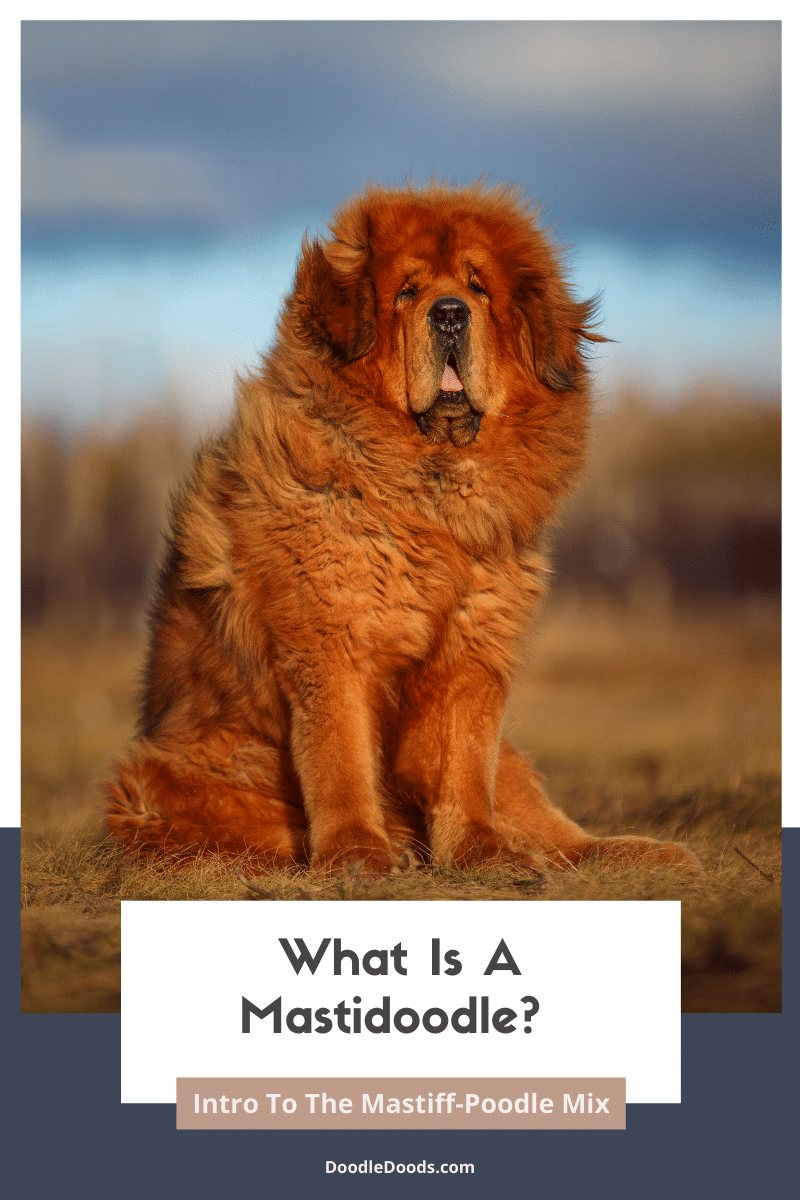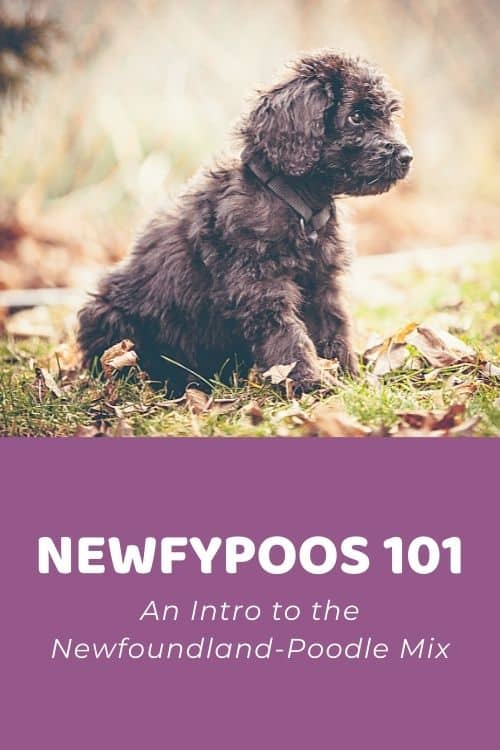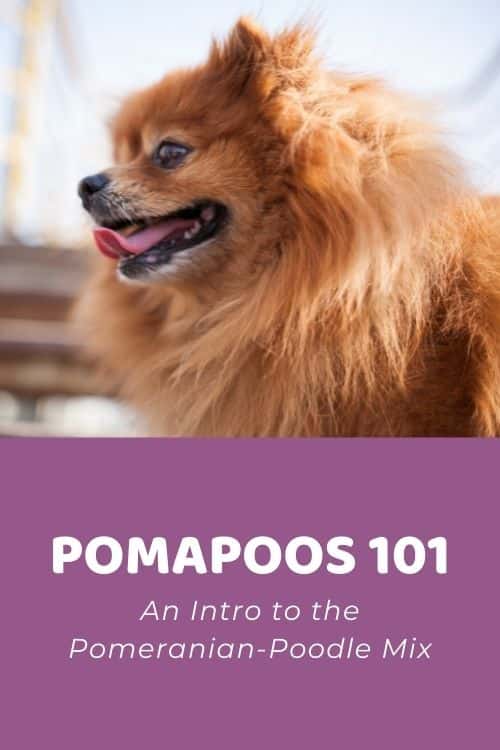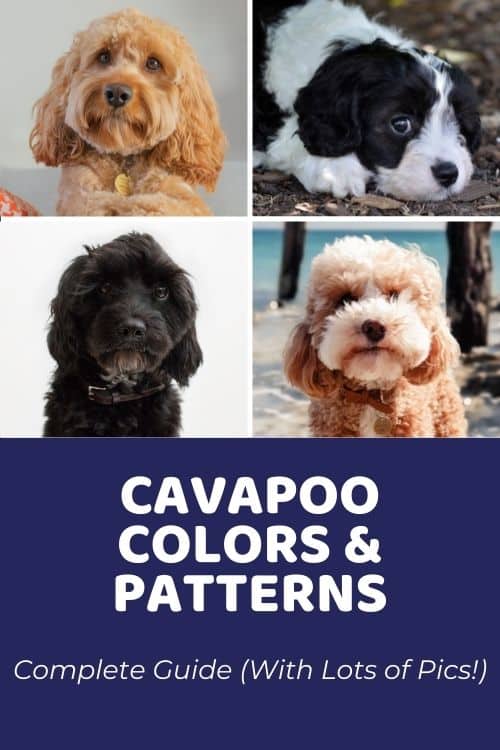If you’re a fan of Poodle mixes, then you’d definitely want to know all about the Rottweiler-Poodle mix! The Rottle might not be as well-known as of yet, but just like other hybrid crosses and Poodle mixes, these Doods are here to stay thanks to their countless amazing qualities. In this article, we’re going to take a closer look at the Rottle crossbreed, so you can learn all about these amazing pups. Let’s get into it!
Table of Contents
- What Is A Rottle?
- Rottle Physical Appearance
- Rottle Pictures (Puppy & Adult)
- Rottle Size: How Big Will A Rottle Get?
- Variations & Generations
- Temperament & Personality
- Exercise & Training
- Rottle Health & Lifespan
- Rottle Coat & Grooming
- Where Can You Get Rottle Puppies?
- Rottle 101: FAQ
What Is A Rottle?
The Rottle is a hybrid cross between the Rottweiler and Poodle. Both of the Rottle’s purebred parents are super popular dog breeds in their own rights, having become household favorites decades ago. And finally, we’ve been blessed with the perfect combination of these two breeds, giving us the amazing Rottle.
Like with other Doodle breeds, there are tons of different names for the Rottle crossbreed, including Rottiepoo, Rottiedoodle, Rottweilerdoodle, and Rottweilerpoo. But for the sake of simplicity, we must say that Rottle works out great!
It’s not exactly known when or where the Rottweiler-Poodle mix was first created, but it’s thought that they’ve been around since the 1980s or 1990s in Germany. Naturally, pinpointing the exact time might be a bit tricky, but we know for sure that Rottles have become increasingly popular in recent years thanks to the soaring popularity of Poodle mixes and other ‘designer breeds’.
Although the Rottweiler’s and Poodle’s appearances couldn’t be further away from each other, they’re actually quite similar in terms of their temperament traits. Both Rottweilers and Poodles are highly intelligent, loyal, and active dogs with a goofy and playful nature.
Just like their purebred parents, Rottles are often confident, lively, insanely loving, and super intelligent pups that love nothing more than to spend time with their favorite humans. Of course, they often have that mischievous streak in them that makes life alongside them that much more fun!
Of course, one key benefit of Rottles is that they tend to shed considerably less than their purebred Rottweiler parents. That’s all thanks to the Poodle genes in the mix! Nonetheless, some Rottles may come with a shedding undercoat, but more on that later in this guide.
Rottle Physical Appearance
Colors
As we are talking about a crossbreed, Rottles can inherit a variety of coat colors and color combinations from each side of their lineage.
Purebred Rottweilers usually come in the AKC recognized black and rust, black and mahogany, or black and tan coats. However, some Rottweilers have also been spotted sporting either red or blue coats with warm-toned markings.
On the other hand, Poodles can come in a wide array of solid coat colors and beautiful patterns and color combinations. From solid colors, you’ll be able to find black, gray, blue, silver, brown, apricot, cream, and white Poodles. They can also flaunt patterns like phantom, abstract, sable, parti, or merle.
Nonetheless, Rottles often inherit the signature Rottweiler coat coloring with the majority of the coat being black, paired with either rusty or tan markings. However, it’s not impossible for Rottle pups to take more after the Poodle parent and inherit lighter colored coats or some fun patterns seen in Poodles.
Coat, Shedding, & Hypoallergenic Level
As we know, the very first Doodles were created to achieve hypoallergenic guide dogs, and the Rottle is no different. Oftentimes, reputable breeders aim to breed Doods with low to non-shedding coats, which makes them suitable for people with allergies. We have to thank the Poodle genes here, as these dogs are notorious for their non-shedding and hypoallergenic coats.
However, it’s not as simple as it sounds. We have to keep in mind that the other purebred dog in the mix – the Rottweiler – is a double coated breed that sheds all year round. Plus, they tend to shed considerably more twice a year in fall and spring.
For this reason, there isn’t a guarantee that a Rottle pup will be 100% hypoallergenic and non-shed like its Poodle parent. In fact, Rottles can inherit three different coat types from their parents – curly, wavy, or straight coats, which we’ll now take a closer look at.
Curly Coat
The curly coat most resembles the Poodle with its thick and textured curls. Curly-coated Rottles usually have a single layer of coats, which means that there’s no shedding undercoat present. Needless to say, this coat type is the most desired option by many. So, if you’re either allergic to dogs or just prefer a pup that doesn’t leave a trail of loose dog hair behind them, a curly-coated Rottle would be your best choice.

However, keep in mind that curly coats are the most high maintenance out of them all. These coats tend to tangle very easily, which makes them the most prone to matting. So, frequent brushing sessions are vital for these Doods to prevent issues with their coats.
Wavy Coat
Then there’s the wavy coat that’s neither curly nor straight, and usually sits somewhere right in between. The great thing about wavy-coated Rottles is that they’re usually the lowest maintenance, as their coats don’t become as easily tangled as curly coats, and they generally shed much less than straight coats.

Still, wavy-coated Rottles may inherit a shedding undercoat from their Rottweiler parents. It all boils down to each pup’s genetic makeup and which traits they inherit from either side of their lineage.
Straight Coat
As the Rottweiler comes with a smooth and short straight coat, it’s not uncommon for some Rottle pups to take after their purebred Rottweiler parents. Straight-coated Rottles usually have longer hair than purebred Rottweilers, but their fur is straight and generally comes with a shedding undercoat. For this reason, straight-coated Rottles aren’t usually the best pick for people who struggle with allergies.
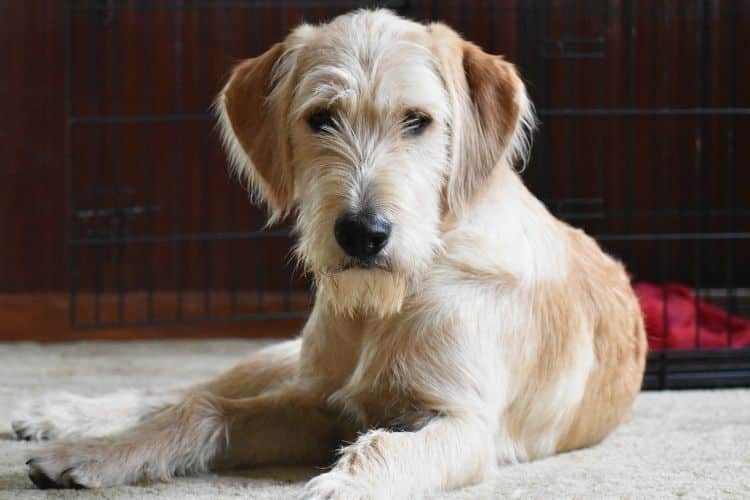
Another thing to keep in mind with straight coats is that as their fur tends to shed, they need some extra help getting rid of all that loose dog hair. If you don’t brush out dead fur, their coats can easily become matted. But, the upside of regular brushing is that you’ll also minimize shedding!
Rottle Pictures (Puppy & Adult)
One thing is to explain how a Rottle pup looks like, another thing is to see it with your own eyes. Here are some adorable examples of how Rottle puppies might turn out – be prepared for some cuteness overload:
| Photo Link | |
| Black Rottle | @ebba_the_rottle_rottie_poo |
| Black and Tan Rottle | @squatchtherottiepooandyetitoo |
| White Rottle | @find_the_lemmie |
Rottle Size: How Big Will A Rottle Get?
The Rottle is a medium to large-sized dog with a weight ranging anywhere from 30 pounds and even up to 100 pounds as an adult. Their height can range between 15 and 27 inches when measured at the shoulder. Now that’s a pretty wide estimate, right?
When it comes to hybrid breeds, it can be difficult to predict the outcome in terms of their looks, size, coat type, and other characteristics. So, we must first gain a better understanding of their heritage.
The Rottweiler is a large dog with an athletic build, and they can weigh between 80 and 135 pounds once fully grown. Their usual height ranges between 22 and 25 inches at the shoulder. Like with most other large breeds, males tend to be slightly bigger than females.
Then we have the Poodle. Or, to be more precise, we have three different types of Poodles – Standard Poodles, Miniature Poodles, and Toy Poodles, the former being the largest of them, and the latter being the smallest.
Currently, Rottles are most commonly created by using either a Standard or Miniature Poodle in the mix. Standard Poodles generally weigh between 38 and 70 pounds once fully grown, with an average height of 24 to 27 inches. Meanwhile, Miniature Poodles weigh as little as 10 pounds, going up to 20 pounds as adults. Their height usually ranges between 10 and 15 inches.
Based on the sizes of the Poodle and Rottweiler, we can expect Standard Rottles to weigh about 55 to 100 pounds, and Mini Rottles will usually weigh in at 30 pounds, going up to 55 pounds. Here’s a helpful Rottle size chart for your reference:
| Mini Rottle | Standard Rottle | |
| Weight | 30-55 pounds | 55-100 pounds |
| Height* | 15-20 inches | 20-27 inches |
| When Full-Grown? | 11-13 months | 12.5-18 months |
* A dog’s height is measured from their withers, the highest part of their shoulder blades.
So, if you’re considering getting a Rottle, their size could be a determining factor in your decision making. Especially since Standard Rottles can grow rather large, which means that they need plenty of space to comfortably roam around.
Another thing to keep in mind is that smaller Mini Rottles generally finish growing sooner than larger Standard Rottles. You can learn more about Rottles’ sizes and growth patterns from this guide here.
Variations & Generations
With crossbreeds, there are numerous ways to produce a litter of puppies, and the Rottle is no different. You might notice that a breeder says they produce either first-generation or F1b Rottle puppies, and it can get confusing pretty fast.
To put it simply, a Doodle pup’s generation tells us how they were bred. It also gives us a hint about the potential outcome in terms of their looks, size, personality, coat type, potential for shedding, and so forth. Here’s a helpful chart explaining all that:
| 1st Parent | 2nd Parent | % Rottweiler* | % Poodle* | |
| F1 Rottle (first-generation) | Rottweiler | Poodle | 50% | 50% |
| F1B Rottle (first-generation backcross) | F1 Rottle | Poodle | 25% | 75% |
| F1BB Rottle (first-generation backcross backcross) | F1B Rottle | Poodle | 12.5% | 87.5% |
| F2 Rottle (second-generation) | F1 Rottle | F1 Rottle | 50% | 50% |
| F2B Rottle (second-generation backcross) | F1 Rottle | F1B Rottle | 37.5% | 62.5% |
| F2B Rottle (alternate cross) | F2 Rottle | Poodle | 25% | 75% |
| F3 / Multigen Rottle | F1B Rottle or higher | F1B Rottle or higher | Varies | Varies |
*These are generic calculations only – genetics are rarely mathematically accurate.
As you can see, there can be quite a few different Rottle varieties. But since the Rottweiler-Poodle mix is one of the newer and lesser known crossbreeds, they are most commonly bred as first-generation or first-generation backcross varieties as of now. Hopefully, we’ll see more Rottle generations emerging in the near future!
Another thing to note with generations is that they let breeders achieve more control over how their puppies might turn out. For instance, if the goal is to achieve smaller Mini Rottles, a breeder might choose to breed an F1 Mini Rottle back to a Miniature Poodle. This will result in a litter of F1b Mini Rottles that will be more predictable in terms of their size, and they’ll likely inherit more of the other Poodle’s traits as well.
Temperament & Personality
The Rottweiler-Poodle mix combines the best of both worlds – the confidence, calmness, and silliness of the Rottweiler with the playful and lively nature of the Poodle. Both Rottweilers and Poodles are highly intelligent breeds that are very much devoted to their humans. And we don’t expect anything less from their Rottle offspring.
Rottles are generally very loving and affectionate dogs that not only love to cuddle with their humans, but also entertain them with their goofy antics. They bond easily with their families, both adults and children, becoming lifelong besties with those around them. For this reason, the Rottle makes a wonderful family dog – a note to any parents reading this guide.
The downside of the Rottle’s loving and affectionate nature is that they can be prone to separation anxiety. Therefore, these pups may not be the best choice for people who have to leave their pup home alone for the majority of the day.
But even though the Rottweiler-Poodle mix tends to be super friendly and loving with its human family, they might be a bit wary of strangers at first. They tend to have a protective nature, so meeting new people can make them slightly more alert.
However, there’s an unfortunate misconception going around that Rottweilers are somehow aggressive dogs. That couldn’t be farther from the truth, and this myth does no justice to this wonderful breed. So, it’s not uncommon for us to hear questions from people like “are Rottles aggressive?”. No, dogs are generally not aggressive unless they have been consistently bred and raised that way. In fact, a dog’s environment and upbringing plays a key role in their temperament.
At the end of the day, if you want a well-behaved, well-rounded, and friendly dog, it’s your responsibility to raise them to be this way. Fortunately, as Rottles are very intelligent dogs that are eager to please their owners, it’s not difficult to set them up for success
Exercise & Training
Rottles are easy to train thanks to their high levels of intelligence and eagerness to please. On the other hand, their stubborn streak may lift its head from time to time, so that’s something you should keep in mind. As long as you stay patient, consistent, and use positive reinforcement training methods, your Rottiepoo pup will surely pick up on all the accepted behaviors and skills you teach them.
With that being said, you should start training your pup from the moment you bring them home. The sooner you start, the better, as young puppies are quick learners. Potty training, crate training, and obedience training will all take time, but it won’t be anything difficult for a pup as smart as the Rottle.
In addition to that, it’s vital that you start introducing your new puppy to people of all ages and other pets as soon as possible. This will teach your new Rottiepoo how to interact with others even outside their household, and build their confidence in different situations and surroundings. Early socialization will do wonders for your new pet, and it’ll help prevent any undesired behaviors stemming from fear, anxiety, or aggression in the future.
In terms of training, a highly intelligent and active dog like the Rottle needs quite a bit of mental and physical stimulation throughout the day. These Doods need at least 60 to 90 minutes of exercise each day, including two longer walks and some vigorous playtime sometime in the day as well.
Don’t forget to also provide your pup with plenty of brain-boosting activities like puzzle toys and interactive games where they have to put their smarts to good use. This will help prevent boredom and any undesired behaviors that bored dogs tend to exhibit, including destructive chewing, digging, and so on.
Enroll Your Dood To An Online Puppy School
Successfully raising a puppy requires a lot of work on your part, which can get overwhelming rather fast. So, if you’re keen on raising a well-behaved dog while building a strong bond with your four-legged best pal, we recommend you take the matters into your own hands with the help of Baxter & Bella’s Online Puppy School.
This program is such a helpful guide for both novice and experienced dog owners, regardless if you have a young puppy or an adult dog. It includes tons of resources and lessons on all things related to raising a happy and well-rounded pup, including the most important training techniques, behavioral challenges, and many other topics.
What makes this program so special is that you can follow it at your own pace from the comfort of your own home, and you can do everything by yourself. In fact, even reputable breeders and dog experts recommend it to dog owners, and us here at Doodle Doods have first-hand experience how amazingly helpful it is.
Rottle Health & Lifespan
The average lifespan of a Rottle is around 10 to 15 years. Again, we can thank their Poodle heritage, as purebred Rottweilers tend to have a significantly shorter lifespan of about 8 to 10 years.
Like other hybrid breeds, Rottles also benefit from hybrid vigor, which means that they’re thought to inherit superior qualities from their purebred parents thanks to a more diverse genetic makeup.
Nonetheless, Rottles can inherit certain health conditions from either side of their lineage. Some of the most common health problems in Rottles include joint problems, such as hip and elbow dysplasia, and patellar luxation. They’re also at risk of eye diseases like progressive retinal atrophy (PRA), and certain heart diseases, including mitral valve dysplasia (MVD) and subaortic stenosis. Other conditions to watch out for are gastric dilation volvulus (GDV), von Willebrand’s disease, and Addison’s disease, allergies and sensitivities, and ear infections.
Choosing a reputable breeder that does extensive genetic testing on their breeding dogs can help minimize the risk of many genetic conditions big time. In addition to that, feeding your pup a healthy and high-quality diet in the right quantities, providing them plenty of exercise and mental stimulation, and making sure they get to live their best lives will certainly play a huge role in their overall health, wellbeing, and longevity.
Rottle Coat & Grooming
Like with other Poodle mixes, daily grooming and maintenance are vital for the Rottweiler-Poodle mix. And even though their Poodle heritage means that they typically shed much less than the purebred Rottweiler, this doesn’t mean that they don’t require any maintenance to keep it that way.
For starters, Rottles should be brushed daily to prevent matting – something that all Doodles are prone to. If you’ve got a double-coated Rottle that sheds hair, daily brushing will also help minimize the shedding while also preventing matting. Make sure you invest in a good quality dog brush, a dog detangler spray, and a metal comb to keep your pup’s coat fluffy, mat-free and luscious at all times.
Rottiepoos also need to have their hair trimmed every two months. You can either take your pup to a professional groomer’s, which can get costly and time consuming pretty quickly. What many Doodle owners do instead is they groom their dogs at home – with a little bit of practice, you’ll soon find this a great way to bond with your pooch and save a lot of money! Our online course How To Groom A Doodle At Home will teach you everything you need to know.
What’s more, regular bathing with a specially formulated dog shampoo, nail trimming, ear cleaning, and teeth brushing are also important steps in any Rottle’s grooming routine. Although it might seem a bit overwhelming at first, these are non-negotiables to keep your pup healthy, happy, and smelling fresh!
Where Can You Get Rottle Puppies?
In the US, reputable Doodle breeders can charge anywhere from 1,500 and up to 4,000 for the Rottweiler-Poodle mix. The exact cost of a Rottle puppy depends on your location, the breeder’s reputation and experience, and even what size and color of puppy you’re looking to adopt.
While adopting a Doodle puppy can be rather costly, we strongly advise you against choosing a breeder solely based on the best price. Extensive work goes on behind the scenes, and ethical breeding involves many-many steps, including rigorous health and genetic testing of the breeding dogs, providing the dogs and puppies a safe and nurturing home environment, early training and socialization, healthy nutrition, and so forth.
To help you find a trustworthy Doodle breeder that only follows ethical breeding guidelines, we created a Doodle Breeder Directory that lists responsible breeders all across the US. Pssst… we’ll soon have our Doodle Breeder Directory available for Canada, UK, Australia, Netherlands, and Germany as well!
Rottle 101: FAQ
The Rottle is a hybrid cross between the Rottweiler and Poodle. Due to the large stature of the purebred Rottweiler, Rottles are usually created with either Standard or Miniature Poodles.
Rottles are very loving and affectionate, highly intelligent and active, loyal, and goofy pups. They make excellent family companions and they’re generally very easy to train. And thanks to their Poodle heritage, they tend to shed minimally, making them suitable pets for people with allergies.
Rottles can weigh anywhere from 30 and up to 100 pounds, standing between 15 and 27 inches tall at the shoulder. Larger Standard Rottles weigh between 55 and 100 pounds with a height between 20 and 27 inches. Meanwhile, smaller Mini Rottles tend to weigh about 30 to 55 pounds and stand around 15 to 20 inches tall at the shoulder.
Learn How to Stop Shavedowns For Good & Keep Matting At Bay!
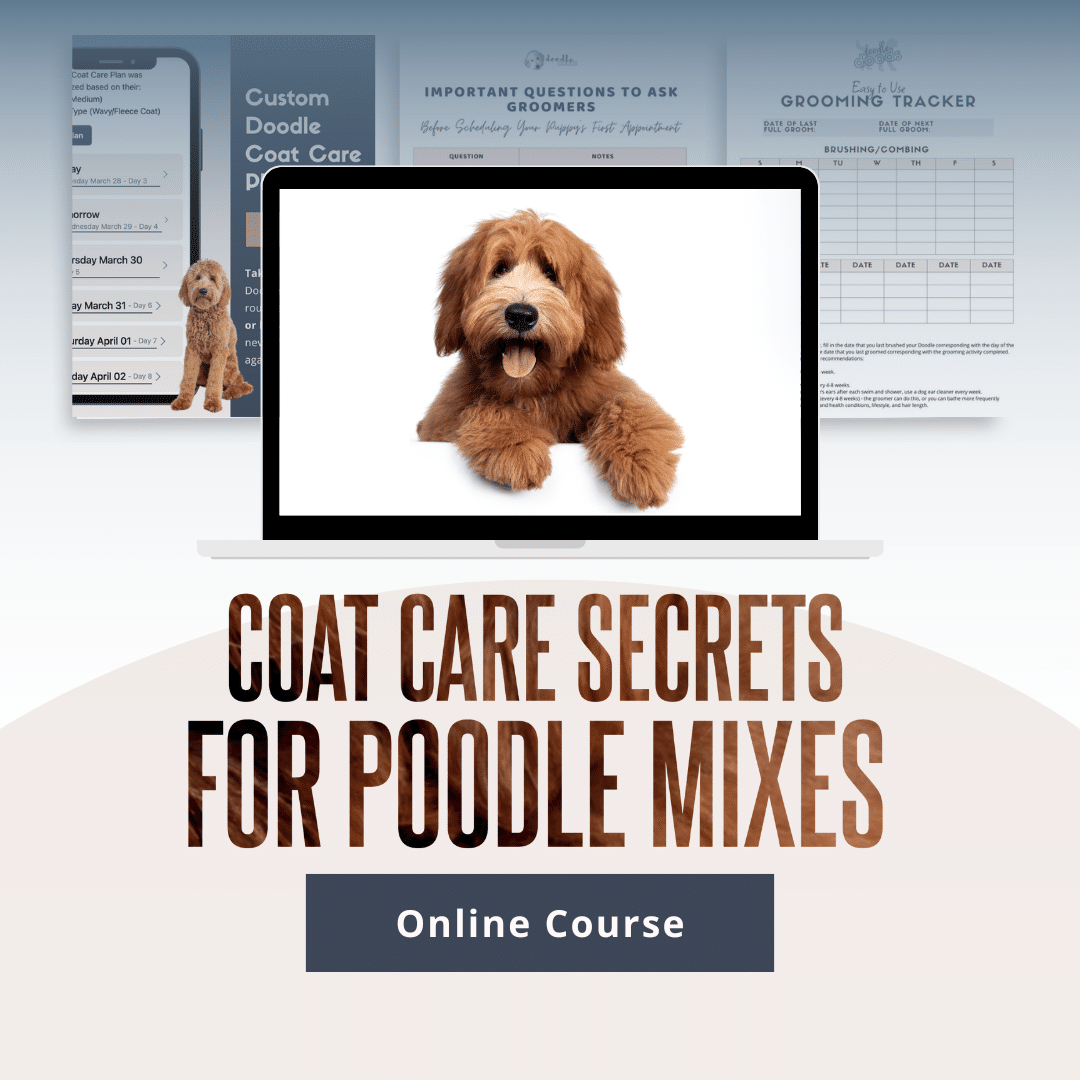
Discover the PROPER Doodle coat care routine that gets your pup to cooperate…helps you nip tangles in the bud…and gets groomers to do exactly what you want.
Plus, get $520 worth of Bonus Materials for FREE, including:- Doodle Parenthood Community and Support Group ($190 value)
- Custom Doodle Coat Care Plan Lifetime Access ($75 value)
- Easy to Use Doodle Grooming Tracker ($20 value)
- And MORE!


